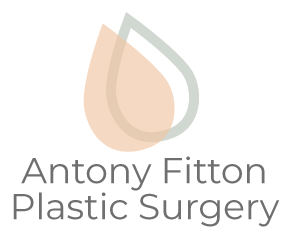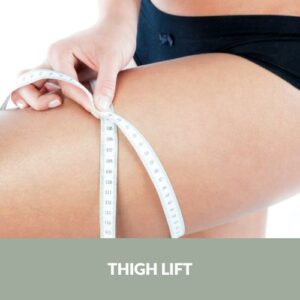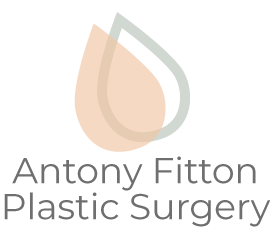
Thigh Lift Surgery: the procedure, recovery, and scarring
Thigh lift surgery, known in medical terms as thighplasty, is a cosmetic procedure aimed at reshaping the thighs by reducing excess skin and, in some cases, fat.
This type of surgery is often sought after significant weight loss or due to aging, which can cause the skin in this area to sag. The main goal is to achieve a smoother and more toned appearance, enhancing both function and aesthetic appeal. Individuals considering this procedure usually aim for improved confidence and comfort, particularly when wearing certain clothing or participating in various activities.
A thigh lift ideally encompasses several areas of the thighs, with specific techniques tailored to meet a patient’s unique needs.
Commonly combined with other procedures, such as liposuction, it effectively targets problem areas more comprehensively. It’s an essential procedure for people looking to regain the youthful contours of their lower body.
Understanding the Thigh Lift Procedure
Thigh lift surgery, also known in medical terms as thighplasty, is a cosmetic procedure aimed at reshaping the thighs by reducing excess skin and sometimes fat, resulting in smoother skin and better-proportioned contours of the thighs and lower body. This can enhance the overall appearance and often boosts the patient’s confidence significantly.
What is Thigh Lift Surgery?
Thigh lift surgery involves incisions in the thigh area, through which the surgeon removes excess skin and, if necessary, fat. The remaining skin is then pulled and stitched back into place, creating a firmer and more toned appearance. This procedure can be particularly beneficial for those who have experienced significant weight loss and are left with sagging skin, or for individuals who want to address skin elasticity issues due to ageing.
While a thigh lift is not primarily a fat removal procedure, it can be combined with liposuction if there are fatty deposits that need addressing for optimal contouring.
Types of Thigh Lift Procedures
There are several types of thigh lift procedures, each tailored to target specific areas and meet particular patient needs:
– Inner Thigh Lift: This common procedure targets sagging skin on the inner thighs. The surgeon typically makes an incision in the groin region, helping to minimise visible scarring.
– Outer Thigh Lift: Focused on the outer thighs, this procedure often involves more extensive incisions and can provide significant lifting for individuals with considerable sagging.
– Mini Thigh Lift: Suitable for patients with only a small amount of excess skin. The incisions are smaller, resulting in less scarring and a faster recovery time.
– Vertical Thigh Lift: Ideal for those needing substantial skin removal, this involves a vertical incision extending down the leg, which may leave a more noticeable scar.
Each type of thigh lift carries its own set of benefits and limitations, and choosing the right one involves careful consultation with a qualified plastic surgeon.
Who Should Consider Thigh Lift Surgery?
Candidates for thigh lift surgery typically include individuals who are bothered by the appearance of their thighs due to loose skin, often as a result of substantial weight loss, ageing, or genetic factors. Ideal candidates are those who are in good general health and have realistic expectations concerning the outcomes.
It is crucial for patients to be at a stable weight before undergoing the procedure, as future weight fluctuations may alter the results. Non-smokers tend to have a smoother healing process, which is an important aspect of the surgery’s success.

The Recovery Process
The recovery process for thigh lift surgery can vary based on the complexity of the procedure and the individual’s healing rate. Understanding what to expect can help patients prepare adequately and ensure a smoother recovery journey.
Post-Operative Care Essentials
Proper post-operative care is essential to ensure optimal healing. Here are some crucial aspects:
– Wound Care: Patients will need to follow specific instructions regarding the care of their incision sites. This includes keeping the area clean and dry to prevent infection and changing dressings as directed.
– Compression Garments: Wearing compression garments can help reduce swelling, support the tissues, and contour the thighs as they heal.
– Mobility: Early, gentle movements are encouraged to promote circulation. However, patients should avoid straining activities that could affect the healing incisions.
– Medications: Pain management is usually handled with prescribed medications, which should be taken as directed to minimise discomfort.
Expected Recovery Timeline
Recovery from a thigh lift surgery generally follows this timeline:
– First Week: Patients may experience swelling, bruising, and discomfort. Activity should be limited, and adequate rest is important.
– Two to Three Weeks Post-Surgery: Swelling and bruising should subside significantly. Patients can gradually resume light activities but should still avoid strenuous tasks.
– Four to Six Weeks: Most people can return to normal daily activities, including work, but should still refrain from heavy exercise.
– Eight Weeks and Beyond: At this stage, many patients can fully resume their regular exercise routines as advised by their surgeon.
Please note: Complete recovery can take several months as the body adjusts and scars continue to fade.
Tips for a Smooth Recovery
To facilitate a smooth and effective recovery, consider the following tips:
– Follow Mr Fitton’s Advice: Adhering to professional guidance is crucial for optimal healing.
– Stay Hydrated and Eat Nutrient-Rich Foods: Proper nutrition supports the body’s recovery process.
– Listen to Your Body: Rest when needed and avoid pushing beyond your comfort limits.
– Keep a Positive Mindset: Having patience and maintaining a positive outlook can significantly affect the recovery experience.
By understanding the intricacies of the thigh lift recovery process, patients can be better prepared to handle post-operative challenges and look forward to achieving their desired results.
Minimising Scarring Post-Surgery
Thigh lift surgery is a transformative procedure that can significantly enhance the contour and appearance of your legs. However, like many surgical procedures, it often comes with unavoidable scarring. While these scars are a natural part of the healing process, there are several strategies that can help in minimising their visibility and ensuring the best possible results.
Importance of Following Mr Fitton’s Guidance
The road to minimising scarring begins with diligent adherence to your surgeon’s post-operative instructions. Your surgeon will provide specific guidance tailored to your individual needs and the specifics of your surgery. This may include how to care for your incisions, when to change dressings, and the best sleeping positions to avoid pressure on your thighs.
Adhering to these instructions helps in preventing infection and reducing tension on the wound edges, both of which can lead to more prominent scarring. Additionally, keeping follow-up appointments allows Mr Fitton to monitor your healing progress and make any necessary adjustments to your care plan.
Effective Scar Treatment Options
Once the incisions have healed, introducing scar reduction treatments can further aid in lessening their appearance. Consider the following options:
– Silicone Sheets and Gels: These are popular choices, as silicone is clinically proven to reduce scar thickness and improve colour. They are generally applied once the wounds have closed and are used consistently for several weeks to months.
– Topical Ointments: Products containing ingredients like vitamin E, onion extract, or snail mucin are often recommended to hydrate and lighten scars.
– Massage: Gentle massaging of the scar tissue can improve circulation and prevent the skin from becoming rigid, thus helping in reducing the scar’s thickness.
– Laser Therapy: This professional treatment is effective in targeting and minimising the appearance of scars, especially if they are raised or discoloured.
Long-term Care for Best Results
To achieve the best long-term outcome, ongoing care beyond the initial recovery phase is essential. Protecting your scars from the sun is crucial, as exposure to UV rays can darken scars, making them more noticeable. Using a high-SPF sunscreen or keeping your legs covered when outdoors can prevent this.
Additionally, maintaining a healthy lifestyle can promote better scar healing. Eating a balanced diet rich in vitamins A and C, zinc, and protein can support tissue repair. Staying well-hydrated and avoiding smoking also supports optimal skin health and healing. Consider consulting with a dermatologist for further advice on maintaining your skin’s integrity post-surgery.
Achieving Optimal Results with Thigh Lift Surgery
Achieving optimal results with thigh lift surgery involves more than just the procedure itself. Success is largely dependent on the synergistic effects of careful planning, skilled execution, and conscientious aftercare.
It’s important to have a realistic expectation of the surgery’s outcome. While a thigh lift can dramatically improve leg contours, it is vital to understand that results vary based on factors such as skin elasticity, healing capacity, and overall health.
Pre-surgery, discussing your goals and concerns with your surgeon ensures that both parties have aligned expectations. Post-surgery, making lifestyle adjustments, such as maintaining a stable weight and engaging in regular, low-impact exercise, will support the longevity of your results. Activities such as swimming, walking, or yoga can particularly aid in toning muscles and improving overall skin tone without stressing the surgical areas.
Moreover, patience plays a significant role in achieving optimal results. Healing is a gradual process, and while initial changes may be visible immediately after surgery, it can take several months for swelling to subside and for scars to mature into fine lines. Thus, maintaining a positive outlook and committing to the ongoing care of your scars and overall health are key components in attaining the best possible outcome from your thigh lift surgery.
How long will the results of a thigh lift last?
The results of a thigh lift are generally long-lasting, provided you maintain a stable weight and healthy lifestyle. However, natural ageing and gravity may affect the skin's tightness over time.
Are there any risks associated with thigh lift surgery?
As with any surgery, there are potential risks including infection, bleeding, and adverse reactions to anaesthesia. It's crucial to discuss these with Mr Fitton to understand all potential complications.
What type of anaesthesia is used during the procedure?
Thigh lift surgery is typically performed under general anaesthesia, though in some cases, local anaesthesia with sedation might be used. Mr Fitton will discuss the most suitable option for you.
Can I combine a thigh lift with other cosmetic surgeries?
Yes, many patients choose to combine a thigh lift with other procedures, such as a tummy tuck or liposuction, to achieve a more comprehensive body contouring effect. Consult with Mr Fitton to determine the best approach.
How soon can I return to my normal activities?
While the initial recovery period lasts around two weeks, complete healing may take several months. Light activities can often be resumed within a few weeks, but more strenuous exercise should wait until Mr Fitton gives the okay.
Plastic surgery can be a life-changing decision, offering both cosmetic and functional benefits.
However, it is crucial to have accurate information and realistic expectations. Consulting with a certified and experienced plastic surgeon is the best course of action to ensure you receive personalised advice and clear answers to any queries.
– Educate Yourself: Research procedures thoroughly.
– Prepare for Recovery: Understand the time and effort needed for healing.
– Prioritise Your Safety: Choose reputable clinics and experienced professionals.
Ultimately, informed decision-making plays a vital role in achieving satisfactory results in any cosmetic procedure.
For a no-obligation quote
For a no-obligation quote, tailored specifically to you, please book in for your consultation with Mr Fitton. Your requirements will be discussed in full confidence in a friendly and relaxed atmosphere.
Following your consultation, the price you are quoted includes everything and there are no extra or hidden costs. Advice, treatment and aftercare are all part of our package to ensure your experience is positive from beginning to end.

About your Plastic Surgeon: Mr Antony Fitton
MB, BS(hons)., MD., FRCS(eng)., FRCS(plast).
Mr Antony Fitton qualified at the Royal London Hospital in 1989 with distinction in Surgery. He holds an MB, BS(Hons)., MD., FRCS(eng). and FRCS(plast). (Fellowship at the Royal College of Surgeons).
He is a member of BAPRAS (British Association for Plastic, Reconstructive and Aesthetic Surgeons), BAAPS (British Association for Aesthetic Plastic Surgeons), and BSSH (British Society for Surgery of the Hand).
Mr Fitton has received the Paton & Masser Award and the CM Matthews Award from the Royal College of Surgeons of England for his research in nerve injury.
Mr Fitton is licensed as a Plastic and Reconstructive Surgeon by the GMC.

- 0% Finance Available
- Consultations and treatments are available at either the Nuffield Health Hospital, Plymouth or the Duchy Hospital, Truro
- Care Quality Commission Regulated
- GMC Specialist Registered Surgeon
- BAPRAS, BAAPS and BSSH member
- Registered MD
Life-changing result
"I just wanted to thank you (and your team) for the life-changing result of my top surgery. This will provide me with the freedom that I’m excited to enjoy, including being able to go swimming and actually staying cool in summer! All jokes aside, you have helped to mark a new chapter in my life, for which I am incredibly grateful… ALL the best."
Our appearance has an impact on how others perceive us. We are experts in creating an improved version of you. You can click on the procedure below for more information.
Body surgery (or contouring) can involve all or one of the following, with a prime focus on areas such as the buttocks, tummy, thighs, arms, and breasts. Click on the links below for more information.
There are several different types of hand surgery but all aim to restore functionality while making the hand look as normal as possible. Click on the links below for more information.

Thigh Lift Surgery: the procedure, recovery, and scarring
Thigh Lift Surgery: Everything you need to know about the procedure, recovery, and scarring. Expert

Breast Augmentation Healing Timeline: What to Expect
Gain insights into each stage of the recovery process and understand the importance of post-surgery

Is Bingo Wing Reduction Safe? Expert Advice from Antony Fitton
Explore the safety of bingo wing reduction surgery, including potential risks and benefits with our








